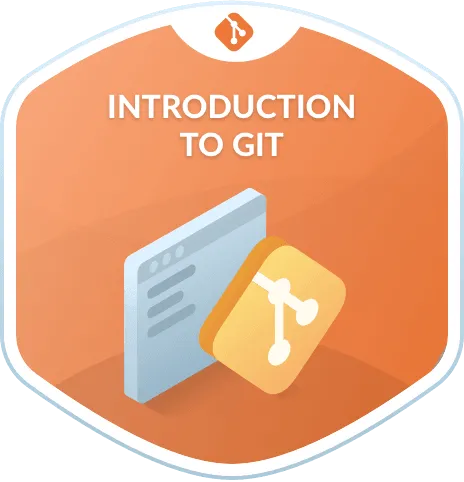
Exploring and Analyzing Data in Python 
Learn how to explore, visualize, and extract insights from data with Exploring and Analyzing Data in Python. This course will teach you the tools you need to clean and validate data, visualize distributions and relationships between variables, and use regression models to predict and explain. You'll use powerful Python libraries such as Pandas, NumPy, SciPy, StatsModels, and Matplotlib to work with real data and make discoveries. Unlock the power of data with Exploring and Analyzing Data in Python. ▼
ADVERTISEMENT
Course Feature
![]() Cost:
Cost:
Free Trial
![]() Provider:
Provider:
Datacamp
![]() Certificate:
Certificate:
Paid Certification
![]() Language:
Language:
English
![]() Start Date:
Start Date:
On-Demand
Course Overview
❗The content presented here is sourced directly from Datacamp platform. For comprehensive course details, including enrollment information, simply click on the 'Go to class' link on our website.
Updated in [April 29th, 2023]
Exploring and Analyzing Data in Python is a course designed to teach students how to explore, visualize, and extract insights from data. Students will learn how to clean and validate data, visualize distributions and relationships between variables, and use regression models to predict and explain. The course will focus on data related to demographics and health, such as the National Survey of Family Growth and the General Social Survey. However, the methods learned in the course can be applied to all areas of science, engineering, and business. Students will use Pandas, a powerful library for working with data, as well as other core Python libraries including NumPy and SciPy, StatsModels for regression, and Matplotlib for visualization. Upon completion of the course, students will be equipped with the tools and skills necessary to work with real data, make discoveries, and present compelling results.
[Applications]
By the end of this course, learners will be able to apply the skills they have learned to explore and analyze data in Python. They will be able to use Pandas, NumPy, SciPy, StatsModels, and Matplotlib to clean and validate data, visualize distributions and relationships between variables, and use regression models to predict and explain. Learners will also be able to use the methods they have learned to work with real data, make discoveries, and present compelling results.
[Career Paths]
Recommended Career Paths:
1. Data Analyst: Data Analysts are responsible for collecting, organizing, and analyzing data to identify trends and patterns. They use their findings to inform business decisions and strategies. Data Analysts must have strong technical skills, including knowledge of Python, SQL, and other programming languages. They must also be able to interpret and communicate their findings to stakeholders.
2. Data Scientist: Data Scientists use their technical skills to analyze large datasets and uncover insights. They use a variety of tools and techniques, including machine learning, to identify patterns and trends in data. Data Scientists must have strong programming skills, including knowledge of Python, and be able to communicate their findings to stakeholders.
3. Business Intelligence Analyst: Business Intelligence Analysts use data to inform business decisions. They use a variety of tools and techniques, including Python, to analyze data and identify trends and patterns. They must be able to interpret and communicate their findings to stakeholders.
4. Data Visualization Specialist: Data Visualization Specialists use data to create visualizations that help stakeholders understand complex data. They use a variety of tools and techniques, including Python, to create interactive visualizations that can be used to inform business decisions. They must be able to interpret and communicate their findings to stakeholders.
[Education Paths]
Recommended Degree Paths:
1. Bachelor of Science in Data Science: This degree program provides students with the skills and knowledge to analyze and interpret data, develop data-driven solutions, and create visualizations to communicate insights. Students will learn the fundamentals of programming, data analysis, machine learning, and data visualization. They will also gain experience in working with large datasets and developing predictive models.
2. Master of Science in Business Analytics: This degree program focuses on the application of data-driven decision-making in business. Students will learn how to use data to identify trends, develop strategies, and optimize operations. They will also gain experience in data mining, predictive analytics, and machine learning.
3. Master of Science in Artificial Intelligence: This degree program focuses on the development of intelligent systems that can learn from data and make decisions. Students will learn the fundamentals of artificial intelligence, including machine learning, natural language processing, and computer vision. They will also gain experience in developing algorithms and building intelligent systems.
Developing Trends:
1. Automation: Automation is becoming increasingly important in data analysis, as it allows for faster and more accurate analysis of large datasets. Automation tools are being developed to automate data cleaning, data transformation, and data visualization.
2. Machine Learning: Machine learning is becoming increasingly important in data analysis, as it allows for the development of predictive models that can be used to make decisions. Machine learning algorithms are being developed to identify patterns in data and make predictions.
3. Cloud Computing: Cloud computing is becoming increasingly important in data analysis, as it allows for the storage and processing of large datasets. Cloud computing platforms are being developed to enable data scientists to access and analyze data from anywhere.
Course Provider

Provider Datacamp's Stats at AZClass
Discussion and Reviews
0.0 (Based on 0 reviews)
Explore Similar Online Courses

How To Make a Virtual Avatar: An Intro to Daz Studio

Introduction to Version Control with Git

RDBMS PostgreSQL

Intro To PostgreSQL Databases With PgAdmin For Beginners

PostgreSQL: Client Applications

Mastering SQL using Postgresql

Database Design and Basic SQL in PostgreSQL

PostgreSQL: Advanced Queries

Spatial SQL with Postgres : A language for geographers

Learn SQL Using PostgreSQL: From Zero to Hero

PostgreSQL Essential Training


Start your review of Exploring and Analyzing Data in Python